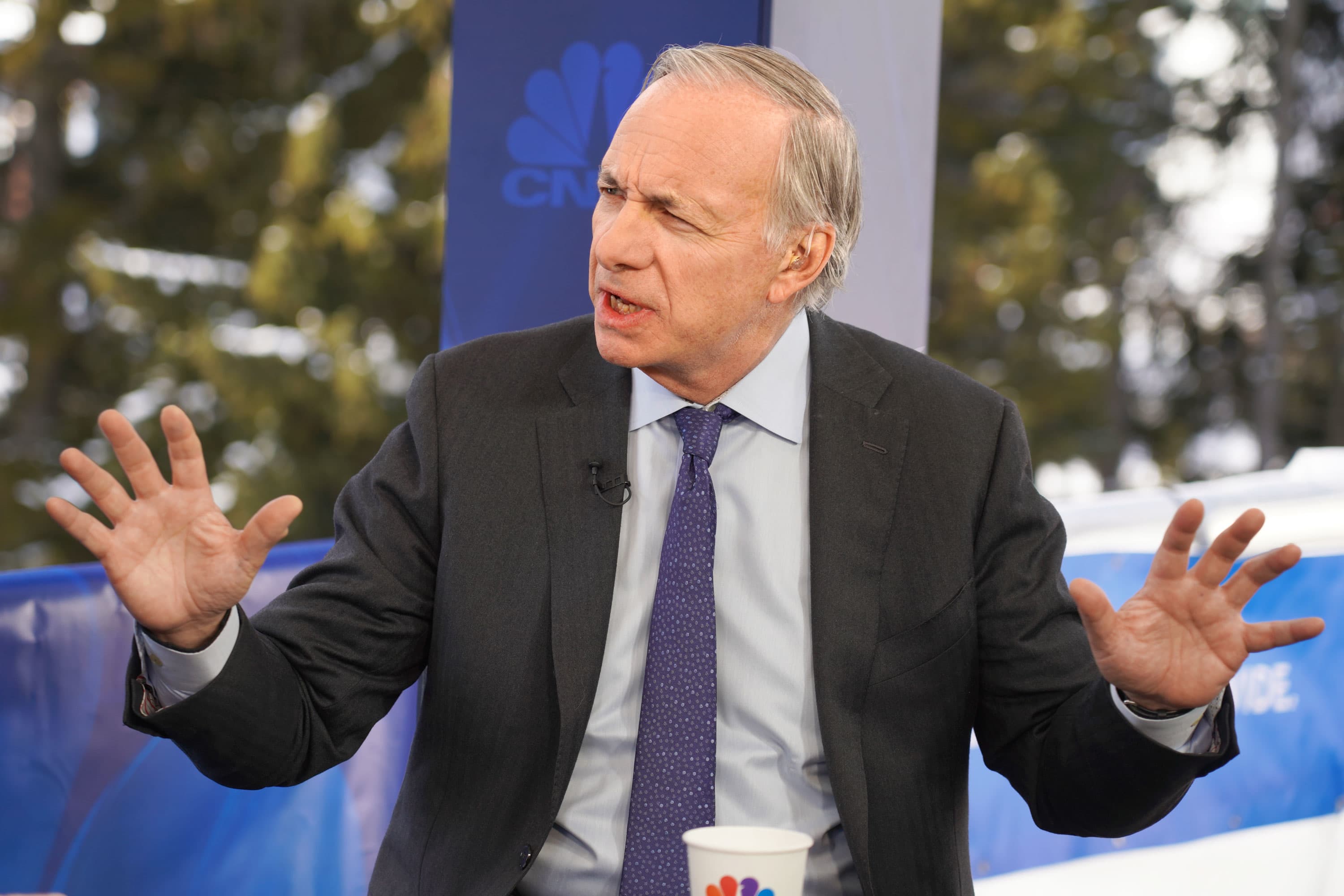Ray Dalio of Bridgewater Associates speaking at the World Economic Forum in Davos, Switzerland, January 21, 2020.
Adam Galica | CNBC
Bridgewater’s Ray Dalio said he has no idea what the extent of the coronavirus will be, but for now he believes the best investment strategy is to diversify across geographic locations, asset class and currencies to protect against the unknowns.
“Terrible, unimaginable things could happen anywhere. What we don’t know is much greater than what we do know,” wrote Dalio in a note Jan. 28. The hedge fund investor said Bridgewater studied past pandemics to put the latest coronavirus in perspective and expects to do more homework on the topic.
Dalio, founder of Bridgewater Associates, said he has no knowledge about the economic or market impacts from the virus, but Bridgewater does know pandemics have happened in the past and have had major impacts.
“Generally speaking these once-in-a-lifetime big bad things initially are under-worried about and continue to progress until they become over-worried about, until the fundamentals for the reversal happen,” meaning the virus switches from accelerating to decelerating, he wrote.
In the case of SARS, the Hong Kong stock market was affected by it and reversed when the number of cases peaked, and then started to decline. “This is all logical and would be the type of market action we would expect if the coronavirus crisis remains concentrated in China,” he noted. He would expect the greater Chinese and Hong Kong markets to be impacted more than world markets and the impact could reverse as the number of new cases starts to fall.
Bridgewater also looked at the H1N1, or swine flu virus in 2009 and 2010. With this virus and SARS, the markets acted in a risk-off way, responding to falling growth and the flight-to-quality. Stocks fell, while gold and bond prices went higher, but these market moves faded and markets could have been responding instead to policy and economic developments that weren’t related to the virus. H1N1 also coincided with the beginning of the financial crisis.
The deadliest pandemic in modern history was the 1918 outbreak of the Spanish flu, which coincided with World War I. The war itself contributed to the outbreak, which infected 500 million people and killed 50 million. The peak of the disease came at the end of the war.
“The impacts of the war and the pandemic are hard to disentangle in market and economy charts, but it looks like positive developments in the war … were overshadowed by the pandemic, marking the end of an equity rally,” he wrote.
The U.S. economy appeared to go into a sharp downturn during the Spanish flu outbreak. A study by the Federal Reserve of St. Louis looked at headlines form the era and found references to the retail grocery business being reduced by a third, and coal mine operations reporting production was cut in half. Merchants in Little Rock, Arkansas also reported a decline in sales of 40%.
“So far, China’s response is much more transparent and decisive compared to the SARS outbreak, which affects both the statistical comparison and the rate of dealing with the problem,” he wrote.
